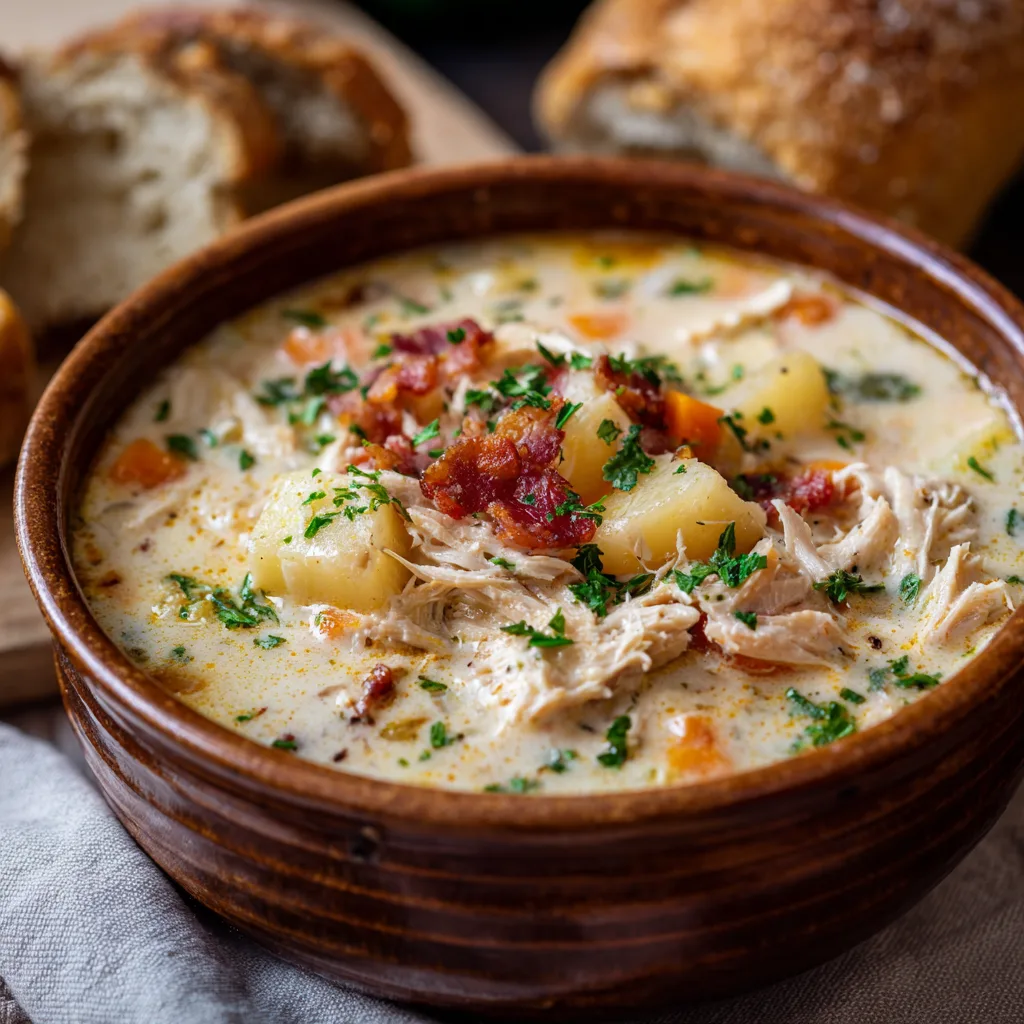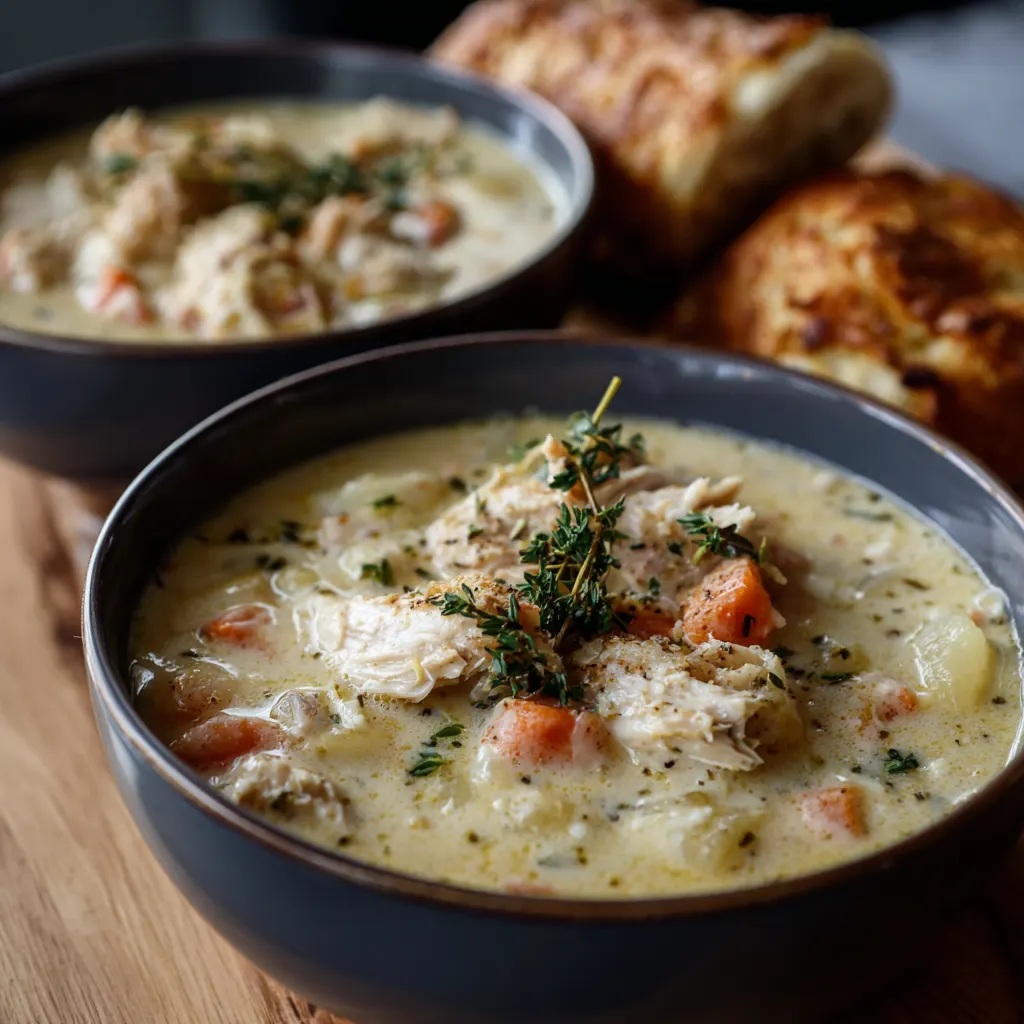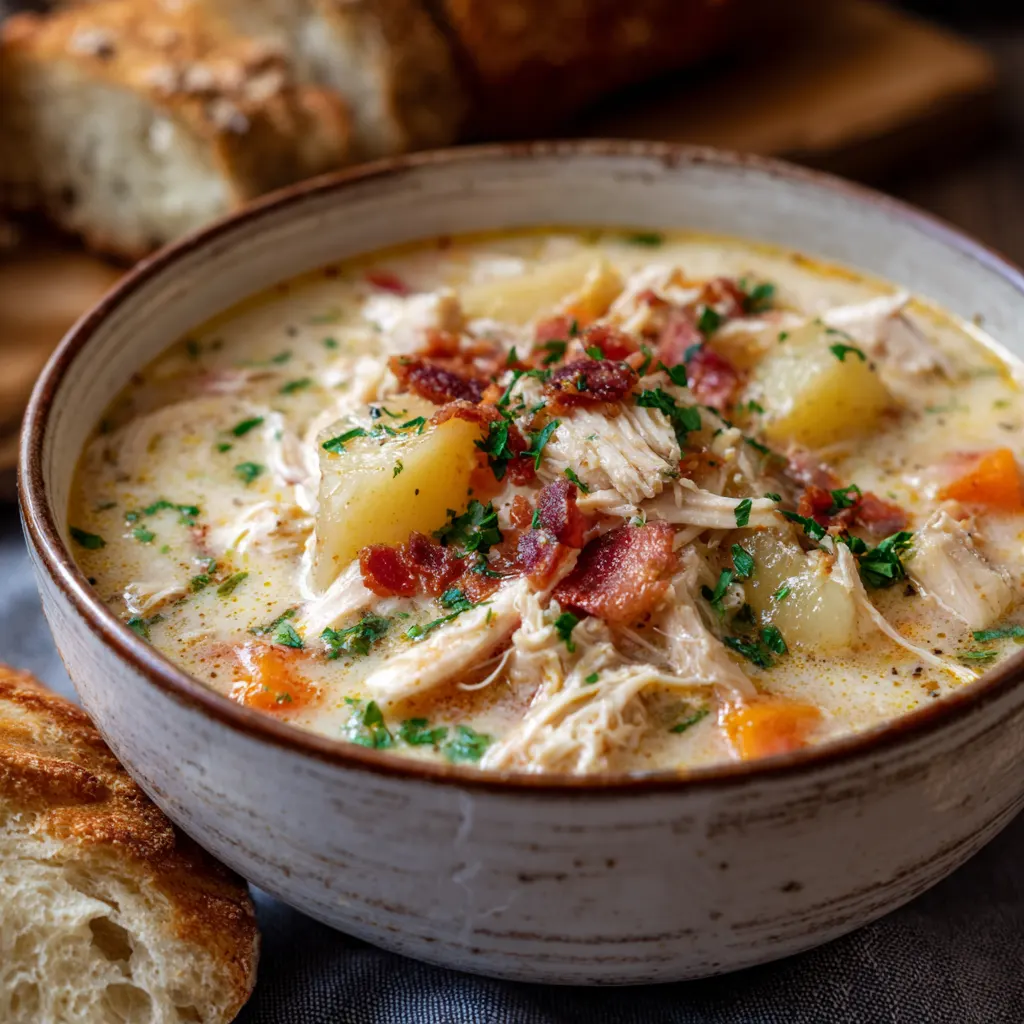Slow Cooker Chicken Chowder: A Creamy, Comforting Delight
Chicken chowder, a hearty and flavorful soup, is a beloved classic. This recipe elevates the traditional version by using a slow cooker, making it incredibly easy to prepare and allowing the flavors to meld together beautifully. This creamy, comforting chicken chowder is perfect for a chilly evening, a potluck, or any occasion where you need a satisfying and delicious meal.
Why Slow Cooker Chicken Chowder is the Perfect Choice
There are countless reasons to love slow cooker chicken chowder. Its ease of preparation is a major draw; simply toss the ingredients into the slow cooker and let it work its magic. The slow cooking process tenderizes the chicken and allows the flavors to deepen and intensify, resulting in a richer, more complex flavor profile than a stovetop version.
Furthermore, this chowder is incredibly versatile. You can easily customize it to suit your preferences by adding different vegetables, spices, or toppings. It’s also a great way to use leftover chicken or vegetables, making it a budget-friendly and sustainable meal. Plus, the slow cooker keeps the chowder warm for hours, making it ideal for gatherings or busy weeknights. It’s a true set-it-and-forget-it meal that delivers amazing results every time
Crafting the Perfect Slow Cooker Chicken Chowder: Step-by-Step
This recipe guides you through the simple steps of creating a delicious slow cooker chicken chowder. From preparing the ingredients to adding the final touches, you’ll find everything you need to create a restaurant-quality chowder at home.
1. Preparing the Ingredients: Begin by gathering your ingredients. You’ll need chicken breasts (or thighs, for a richer flavor), potatoes (Yukon Gold or Russet work well), corn (fresh, frozen, or canned), carrots, celery, onion, garlic, chicken broth, cream cheese (or heavy cream for a lighter option), butter, flour, and your favorite seasonings (salt, pepper, thyme, bay leaf, and a pinch of cayenne pepper are excellent choices). Dice the vegetables into bite-sized pieces and cube the chicken.
2. Assembling the Chowder in the Slow Cooker: In the slow cooker, combine the chicken, potatoes, corn, carrots, celery, onion, garlic, chicken broth, butter, and seasonings. Stir well to ensure everything is evenly distributed. Add the bay leaf, if using.
3. Slow Cooking to Perfection: Cover the slow cooker and cook on low for 6-8 hours, or on high for 3-4 hours. The chicken should be tender and easily shredded with a fork, and the vegetables should be cooked through.
4. Adding the Creaminess: In the last 30 minutes of cooking time, remove the bay leaf. In a small bowl, whisk together the flour and a little bit of the hot broth from the slow cooker until smooth. This will create a slurry that will help thicken the chowder. Stir the slurry into the slow cooker. Add the cream cheese (or heavy cream) and stir until melted and evenly distributed.
5. Serving and Enjoying: Once the cream cheese (or heavy cream) is fully incorporated and the chowder has thickened slightly, it’s ready to serve. Ladle the chowder into bowls and garnish with fresh parsley, chopped green onions, crumbled bacon, or a dollop of sour cream. Serve with crusty bread or crackers for a complete and satisfying meal.
Tips and Tricks for Slow Cooker Chicken Chowder Success
While this recipe is straightforward, these tips and tricks will help you achieve the best possible results:
- Don’t Overcook the Chicken: Overcooked chicken can become dry and tough. Cook just until it’s easily shredded with a fork.
- Adjust the Thickness: If you prefer a thicker chowder, use more flour in the slurry. For a thinner chowder, use less flour or skip the slurry altogether.
- Add Vegetables According to Cooking Time: Add heartier vegetables like potatoes and carrots at the beginning of the cooking process. More delicate vegetables like corn can be added later to prevent them from becoming mushy.
- Use High-Quality Chicken Broth: The quality of your chicken broth will significantly impact the flavor of the chowder. Use a good-quality store-bought broth or, even better, homemade broth.
- Spice It Up: Add a pinch of cayenne pepper or a dash of hot sauce for a little extra heat.
- Make It Ahead: Slow cooker chicken chowder is a great make-ahead meal. You can prepare it the day before and reheat it gently on the stovetop or in the slow cooker.
- Freeze for Later: Leftover chowder can be frozen for up to 3 months. Allow it to cool completely before transferring it to freezer-safe containers. Thaw overnight in the refrigerator before reheating.
Variations to Customize Your Chicken Chowder
The beauty of this slow cooker chicken chowder recipe lies in its adaptability. Feel free to experiment with different ingredients and flavors to create your own unique version.
- Seafood Chowder: Add shrimp, crab, or clams to the chowder for a delicious seafood twist. Reduce the amount of chicken or replace it entirely.
- Spicy Southwest Chowder: Add diced green chiles, black beans, and corn for a Southwestern-inspired chowder. Use chili powder and cumin for seasoning.
- Vegetarian Chowder: Omit the chicken and use vegetable broth instead of chicken broth. Add extra vegetables like bell peppers, zucchini, and spinach.
- Cheesy Chowder: Add shredded cheddar cheese or Monterey Jack cheese to the chowder during the last 30 minutes of cooking time.
- Loaded Baked Potato Chowder: Add bacon, sour cream, and shredded cheese to the chowder for a loaded baked potato-inspired flavor.
- Smoked Sausage and Chicken Chowder: Add sliced smoked sausage to the slow cooker along with the chicken for a smoky and savory flavor.
No matter what variations you choose, this slow cooker chicken chowder is sure to be a hit. Its creamy texture, flavorful broth, and tender chicken make it a comforting and satisfying meal for any occasion.
Frequently Asked Questions (FAQ)
Q: Can I use frozen chicken in the slow cooker?
A: While it’s generally recommended to thaw chicken before adding it to a slow cooker for food preservation reasons, many people have had success using frozen chicken breasts. If you do, be sure to increase the cooking time by 1-2 hours to ensure the chicken is fully cooked. Use a food thermometer to verify that the internal temperature reaches 165°F (74°C).
Q: Can I make this chowder dairy-free?
A: Yes, you can easily make this chowder dairy-free by substituting the cream cheese or heavy cream with coconut cream or cashew cream. You can also use a dairy-free butter alternative.
Q: Can I use chicken thighs instead of chicken breasts?
A: Absolutely! Chicken thighs are a great option for slow cooker chicken chowder as they tend to be more flavorful and stay moist during the long cooking process.
Q: How do I store leftovers?
A: Allow the chowder to cool completely before transferring it to an airtight container. Store it in the refrigerator for up to 3-4 days.
Q: Can I add other vegetables?
A: Yes! Feel free to add other vegetables to the chowder, such as bell peppers, zucchini, or green beans. Add them in the last hour of cooking time to prevent them from becoming too soft.
Q: What can I serve with chicken chowder?
A: Chicken chowder is delicious on its own, but it also pairs well with crusty bread, crackers, a side salad, or grilled cheese sandwiches.
Q: How can I prevent the potatoes from getting mushy?
A: Use Yukon Gold or red potatoes, as they hold their shape better than Russet potatoes. Avoid overcooking the chowder. Check the potatoes for doneness after about 6 hours of cooking on low or 3 hours on high.
Q: My chowder is too thick. What can I do?
A: Add more chicken broth to thin it out. Start with a small amount and add more until you reach your desired consistency.
Q: My chowder is too thin. What can I do?
A: Mix 1 tablespoon of cornstarch with 2 tablespoons of cold water to make a slurry. Stir the slurry into the chowder and cook on high for 15-20 minutes, or until thickened.
Q: Can I use an immersion blender to make it smoother?
A: Yes, you can use an immersion blender to partially blend the chowder for a smoother texture. Be careful not to over-blend it, as it can become gluey.




